
Research Article
Austin J Proteomics Bioinform & Genomics. 2022; 7(1): 1032.
In Vitro & In Silico Studies of Cordia myxa Phytochemicals in Contrast to Breast Cancer: A Bioinformatics Approach
Ambresh V* and Gowda P
Department of Biotechnology, Bangalore City College, Bangalore, India
*Corresponding author: Ambresh V, Department of Biotechnology, Bangalore City College, Bangalore, India
Received: March 17, 2022; Accepted: April 11, 2022; Published: April 18, 2022
Abstract
Cordia myxa which is rarely found in the southern part of Karnataka due to the climatic conditions, but it is mostly found in the warmer region of Karnataka which is the north part of Karnataka (Raichur, Bellary, Gulbarga, Koppal, Bijapur). The people of north Karnataka use this medicinal plant to soften their tongue blisters. We have performed the phytochemical screening and antimicrobial activity using the extracted solvents of leaf phytochemicals and broth dilution methods. We observed the excellent zone of inhibition against the E. coli and Bacillus subtitlus with the default parameters.
In the present study, we will take a step to analyze those receptors using molecular docking studies. We have selected the phytochemicals and receptors for initiate the molecular docking and will investigate the inhibitory activity of phytocompounds using in silico studies.
Keywords: Cordia myxa; Phytocompounds; Molecular docking
Introduction
This plant has its own mythological value in the history of northern Karnataka. So that led the researchers of northern part of Karnataka to select the plant and extract to know its medicinal importance and to implement its uses accordingly.
Morphology
Cordia myxa thrive in about fifty-sixty years by when its girth at the breast height is about 1-1.5 m. Its main trunk is generally straight and cylindrical at height of almost 3-4 m. The branches open out in all direction forming a beautiful inverted dome like an umbrella. The height of grown-up tree measures around 10-15 m. The growth mainly depends upon climatic conditions, in an unfavourable condition it may even end up as a dwarf shrub.
It has a greyish brown coloured bark with longevity and upright crevice. This tree can be seen from far away due to its crevice which is projecting in the bark of the main trunk of a tree approaching maturity [1].
Breast cancer (Bc)
Breast cancer is a disease where in which the tissue from breast forms of malignant cancer. Usually, a tube carries milk to nipple (duct) and towards gland that from milk. It is most common for men and women, although in male disease diagnosis is rare. It is a heterogeneous that differs by indusial age group and kind of cell in the tumor. Cancer begins when healthy cells in the breast change and grow out of control, forming a mass or sheet of cells called a tumor. A tumor can be cancerous or benign. A cancerous tumor is malignant, meaning it can grow and spread to other parts of the body. A benign tumor means the tumor can grow but will not spread. Although breast cancer most commonly spreads to nearby lymph nodes, it can also spread further through the body to areas such as the bones, lungs, liver, and brain. This is called metastatic or stage IV breast cancer and is the most advanced type of breast cancer. However, the involvement of lymph nodes alone is generally not stage IV breast cancer.
The most common cause of hereditary breast cancer is an inherited mutation in the BRCA1 or BRCA2 gene. In normal cells, these genes help make proteins that repair damaged DNA. Mutated versions of these genes can lead to abnormal cell growth, which can lead to cancer. If you have inherited a mutated copy of either genos from a parent, you have a higher risk of breast cancer.
BRCA1 AND BRCA2
BRCA1 (Breast Cancer susceptibility gene 1) and BRCA2 are tumor suppressor genes, the mutant phenotypes of which predispose to breast and ovarian cancers. Intensive research has shown that BRCA proteins are involved in a multitude of pivotal cellular processes [2]. In 1994, the breast-cancer susceptibility gene, BRCA1, was identified by positional cloning; subsequently, this gene has been the subject of intensive research efforts [3]. BRCA1 is composed of 22 coding exons distributed over 100kb of genomic DNA. This gene encodes 1863 amino acids, and more than 200 different germline mutations associated with cancer susceptibility have been identified. Many disease-predisposing alleles of BRCA1 have loss-of function mutations, the majority of which result in premature truncation of the protein. Because only 45% of familial breast cancers showed evidence of linkage to BRCA1.
The search for a second breast cancer susceptibility gene continued. In 1995, the BRCA2 gene was identified at chromosome 13q12.3Human BRCA2 protein is composed of 3418 amino acids (384 kDa). The N-terminal part of the BRCA2 protein contains a transcriptional activation domain (aa 18-105). BRCA2 exon 11 encodes eight conserved motifs termed BRC repeats. Each of these repeats is composed of about 30 residues. A DNA-binding domain has been located in the C-terminal region of the BRCA2 protein (aa 2478-3185). It is composed of a conserved helical domain and three OB folds. Two nuclear localization signals (NLS) have been identified in the C-terminal region of BRCA2.Mutations in BRCA1 and BRCA2 are not simply associated with an elevated risk of breast cancer. Mutation carriers also have increased susceptibility to ovarian, pancreatic, prostatic, and male breast cancers. Other associations may be revealed as more epidemiological information becomes available. Surprisingly, despite the inherited predisposition to cancer associated with BRCA1 and BRCA2, somatic disease-causing mutations in either of these genes are extremely rare in sporadic breast cancers. Over the last 10 years, much has been learned about the structures, functions, and unique features of BRCA gene products. In particular, research into the functions of BRCA proteins has revealed that BRCA proteins interact with a number of regulatory proteins (Table 1).
Component
Plant uses
Medicinal uses
References
Alkaloids
Acts as plant growth regulator and used as insecticides
Acts as antiseptic, drug, antimalarial, antiasthma, anticancer, analgesic, antimicrobial
[4]
flavonoids
Involved in floral pigmentation, symbiotic nitrogen, physiological regulators as well as cell cycle inhibitor
Used as anti-inflammatory, anti-allergic, antimicrobial, anticancer, and antidiarrheal bioactivities
[5,6]
Carotenoids
Used as perfumes, provide colour to the plants
Involved in the reduction of risk of lung cancer
[7]
Stigmasterol
Acts as a precursor
Involved in the production of the semisynthetic progesterone, and antioxidants
[8]
Amino acids
Plant growth cancer, involved in the protein synthesis, increases the physiological activity
Artificial sweetener, regulates, metabolic pathway and gene expressions, cell signalling & oxidative responses
[9]
Beta-sitosterol
Used as a plant sterol
Used to reduce the blood cholesterol & benign prostatic hyperplasia
[10]
Ascorbic acid
Important role in cell division & protein modification
Maintain the health of cartilage, skin, teeth, and blood vessels, also used for treating tumor and scurvy.
[11]
Table 1: Secondary metabolites are present in different forms in Cordia myxa with various properties.
In the present study, we will take a step to analyze those receptors using molecular docking studies. We have selected the phytochemicals and receptors for initiate the molecular docking and will investigate the inhibitory activity of phytocompounds using in silico studies.
Methodology
Collection of leaves
The fresh leaves of Cordia myxa were collected in the month of July from sirwar taluk, Raichur district, Karnataka. The leaves were washed with sterile distilled water to remove the dust particles and dried using hot air oven.
Preparation of Cordia myxa plant extract
Sample Collection: The plant leaves of Cordia myxa were collected from sirwar taluk, Raichur district, Karnataka.
Soxhlet extraction: The plant leaves of Cordia myxa were washed to remove dust particles followed by drying in hot air oven at 50°C overnight. Dried leaves were then grinded to make a fine powder. The dry extract of plant leaves was subjected to Soxhlet extraction, which is used for the continuous extraction of plant extract with high efficacy. Solvent used in extraction was methanol. Extraction was carried out at 60°C for 5-6 hrs. Methanolic extract thus obtained poured in dry petri dishes and subjected to drying in hot air oven for overnight at 50°C. After drying, with the help of tooth pick, methanolic extract from petri dishes was scratched and collected in vials.
Leaves extracts preparation
In Methanol Solution: The air-dried fresh leaves of Cordia myxa was collected and pounded into a powder using pestle and mortar. 15gm of the leaf sample was mixed in 200 mL methanol and allowed to stand for 1 hour before filtering with the help of Whatman filter paper. The filtrate was overnight dried in hot air oven (40°C). The extraction yielded 6g and standard extracts obtained were kept in a refrigerator at 4°C for antibacterial activity analysis [12].
Phytochemical screening
The Phytochemical analysis for the identification of the secondary metabolites such as Flavonoids, Tannins, Saponins, Alkaloids, Proteins, and Carbohydrates were performed using the standard process by Sofowora (1993), Trease and Evans (1972) and Odebiyi and Sofowara (1979).
Antimicrobial activity
Bacterial culture preparation: To perform the antibacterial activity of given plant extract, bacterial culture of Staphylococcus aureus was obtained from MTCC (Strain number: -737). By Streak plate method, pure colonies of S. aureus were obtained. To obtain pure culture, sterile culture conditions were maintained by sterilizing every reagent and materials twice. Overnight grown culture of given bacteria was obtained in order to perform antibacterial activity.
Antibacterial assay of plant extract by Disc diffusion method/ Kirby-Bauer test: Kirby-Bauer test or disc diffusion method is used for determination of effectiveness of certain antibiotic by inhibiting the growth of particular bacteria. For the procedure of antibacterial activity, MH agar media was prepared and followed by sterilization. For sterilization purpose, various materials including petri dishes, micropipette tips, cotton swab, well borer, etc were sterilized. Sterile media was poured in petri dishes. All the procedure of antibacterial activity was performed in sterile environment of Laminar air flow cabinet. After solidification of media plates, bacterial culture of S. aureus MTCC Number 737 was spread on media plates with the help of cotton swab. It was followed by puncturing wells in media plate with the help of well borer. Afterwards, methanolic extract of Cordia myxa were added in respective wells along with positive control and negative control which were Methanol and distilled water respectively. Two media plates were taken, among which one is subjected to well boring of 4 wells and other is subjected to bore 3 wells. In petri plate containing 4 wells, plant extract was added in aliquotes of 100, 75, 50, 25 microlitre and final volume was made up to 100 microlitre by adding Methanol. In other plate containing 3 wells, 10 microlitre of pant extract was added and final volume was made up to 100 microlitre by Methanol. Rest of the wells was subjected to the addition of 100 microlitres of Methanol and distilled water respectively. In the remaining position of other plate, one disc (15mm) of standard Erythromycin antibiotic was incorporated onto the media (Table 2).
Well No.
Volume of plant extract (mL)
Volume of Methanol (mL)
Volume of distilled water (mL)
1
100
-
-
2
75
25
-
3
50
50
-
4
25
75
-
5
10
90
-
6
-
100
-
7
-
-
100
Erythromycin disc (15mm)
-
-
-
Table 2: Quantitative analysis of reagents used in antibacterial assay method.
After addition of all the reagents, plates were incubated in incubator for 24hrs at 37°C.
Disease selection
Breast cancer was chosen as the target disease to investigate Cordia myxa’s anti-cancer effects. The BRCA 1 and BRCA 2 are the reason for spectra of the breast cancer.
Ligand preparation
A total of 18 ligands were selected for the present study from the plant Cordia myxa. For all the selected ligands Structure data format (SDF) files were downloaded using the PubChem database [13]. These were analyzed using Marvin view which is an advanced chemical viewer for 2D or 3D structures of chemicals and their related information. The canonical SMILES IDs of all the selected ligands were noted and estimation of the physico-chemical properties of these ligands was done using PubChem database [14]. Following this, using PyMol software the selected ligands were converted into 3D structure for the further use.
Target selection and prediction
PubChem database (https://pubchem.ncbi.nlm.nih.gov) and Protein Data Bank (www.rcsb.org/pdb) were used for retrieving the structures of the respective human protein receptors BRCA2 and BRCA1 [15]. Furthermore, the criteria for the target structure were investigated using Protein Data Bank analysis and BLAST (https:// blast.ncbi.nlm.nih.gov). Using Discovery Studio Visualizer, the ions, ligands and water molecules were removed from the protein molecules prior to molecular docking analysis [16]. Later, the hydrogen atoms were added to the protein receptors subsequently.
Homology modelling of BRCA1 and BRCA2
A protein’s three-dimensional structure contains crucial knowledge for understanding its biochemical mechanism and molecular interaction properties. The aim of homology modelling is to create 3D protein structure models from experimentally shown configurations of similar family members in the form of templates. Homology modelling is probably the most effective computational tool for generating stable structural models, and it is used in a wide range of biological applications. Many implementations use homology models, such as modelling site-directed mutagenesis tests, virtual screening and rationalizing the sequence variations results [17].
Since the 3D structure of the target proteins were not available in the Protein Data Bank, the protein sequences of BRCA2 and BRCA1 were retrieved from the NCBI databases for purpose of structure prediction. Further, the targeting of the templates was performed using a homology search through NCBI and PubChem databases. Above 90% of homology for the selected template with respect to BRCA2 and BRCA1 was observed in the terms of percent identification. This was done using the tool SWISS-MODEL (http://swissmodel.expasy. org) ]which is an automated homology modelling server of protein structures [18] which was the first automatic modelling server to be released with free access [19]. Thus, the structures obtained can be visualized using PyMOL software [20].
Drug likeness analysis
Lipinski’s rule of five or RO5 (rule of five) is a key rule for the estimation of drug likeness or to evaluate the presence of any pharmacological or biological activities of a chemical compound [21]. The Lipinski rule, that is mostly misapplied and misinterpreted, is actually developed to help in oral bioavailable drug development and was not intended for the small molecule drug development. This rule is considered as a crucial part in the insilico pre-clinical analysis where the ligands need to satisfy all the parameters included in this rule.
The five chief physiochemical parameters of the rule of five are I) Molecular weight of the compound should be lower than 500 Daltons, II) Lipophilicity have to be lower than 5 which is generally denoted as logP (the logarithm of the partition coefficient between 1-octanol and water) is signified as a quantity, III) The number of groups in the compound capable of donating hydrogen atoms to hydrogen bonds (usually the sum of amine and hydroxyl groups in a drug molecule) should be below 5, and IV) The number of groups that can accept hydrogen atoms to form hydrogen bonds is must be less than 10.
Admet analysis
ADME stands for absorption, distribution, metabolism, and excretion in pharmacology and pharmacokinetics describes the pharmaceutical compound disposition in an organism. The four parameters affect the levels of drug [22] and the rate of susceptibility of drug to tissues, and hence this exhibits impact on the compound’s performance as well as pharmacological property as a drug [23]. ADME addresses the pharmacokinetic problems that determine when a drug molecule reaches the target protein in the body and the period it remains in the bloodstream. A drug of high-quality must not only be therapeutic target effective, but should also exhibit therapeutic dosage with acceptable ADMET parameters [24].
SwissADME (http://www.swissadme.ch) was used for the ADMET analysis which is a web platform that provides unlimited access to a swift and accurate predictive model for drug-likeness, medicinal chemistry friendliness, physicochemical properties, and pharmacokinetics. Besides this, it also includes techniques such as the iLOGP, Bioavailability Radar, and BOILED-Egg. SwissADME is also a login-free web platform that provides user-friendly interface enabling easy and effective interpretation of the results, which can also be used by non-expert users in CADD. It calculates the key pharmacokinetic, drug likeness and associated parameters for more than one molecule [25].
Active binding site analysis
The molecular docking process generally starts with determination of active binding site of the selected proteins [26] which indicates the particular proteins restricted region [27]. In virtual screening, prediction of ligand binding sites on the surface of proteins with the aid of swift, accurate and automated tool is a major challenge [28]. Recognition of active binding sites was identified using Biovia discovery tool. In this study blind docking method was performed between target proteins and selected ligands.
Molecular docking analyses
An important step in virtual screening is estimation and finding the correct target for the successful docking. Using the available threedimensional structure of target proteins, application of appropriate docking tool for the search of best binding site of ligand and target protein can be performed [29]. Several docking tools are available for the docking-based virtual screening (DBVS). In this study, PyRx (https://pyrx.sourceforge.io/) which is an open-access and userfriendly tool is being used. PyRx includes various other software’s like open babel, AutoDock and AutoDock vina [30]. The analysis of the docked proteins will be done once the docking is completed [31]. Thus, after the docking the results will be saved and based on the dock score function the ranking is done [32].
Results
Phytochemicals test
See Table 3.
Biochemical Test
Observation
Result
Mayer’s test
Yellow coloured precipitate
+
Fehling’s test
Red coloured precipitate
+
Tannin’s test
Bluish black coloured precipitate
+
Xanthoproteic test
Yellow coloured precipitate
+
Ferric chloride test
No bluish black coloured precipitate
-
Saponin’s test
Foam formation
+
Table 3: Following table gives brief idea about phytochemical screening of Cordia myxa.
Biochemical assay of leaf extract of Cordia myxa
See Figure 1-6.

Figure 1: Mayer’s test.

Figure 2: Fehling’s test.

Figure 3: Tannin’s test.
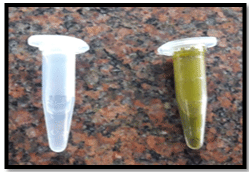
Figure 4: Xanthoproteic test.
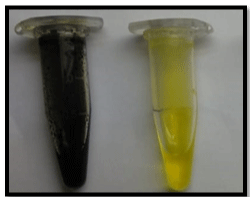
Figure 5: Ferric chloride test.
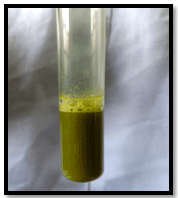
Figure 6: Saponin’s test.
Organism
Among different pathogens, Staphylococcus aureus is a potential microscopic organism causing diseases. There are different antimicrobial agents which are utilized to treat Staphylococcus aureus infectious diseases. Among them, we have concentrated on Erythromycin. We performed the antibacterial activity of plant extract; Cordia myxa, in correlation with Standard Erythromycin disc (15mm) (Figure 7).
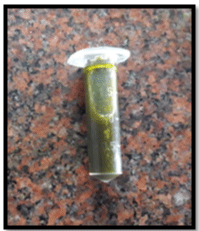
Figure 7: Preparation of Methanolic extract of Cordia myxa.
We saw that the given plant extricate was displaying antibacterial action against S. aureus as it was indicating zone of restraint or zone of inhibition around the well on MH (Mueller Hinton) agar plate. We did investigation of crude plant concentrate and erythromycin so as to explain how much compelling a plant concentrate could be in counteraction of diseases brought about by S. aureus. Results were demonstrated that well containing plant extricate was indicating zone of inhibition of diameter 24.33 mm in examination with standard Erythromycin plate which was demonstrating 29 mm of zone of inhibition (Figure 8 and 9).
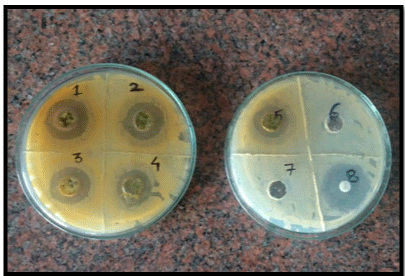
Figure 8: Zone of inhibition on MH agar plate; Well no.1) 100ul extract, 2) 75ul
extract+25ul methanol, 3) 50ul extract+50ul methanol, 4) 25ul extract+75ul
methanol, 5) 10ul extract+ 90ul methanol, 6) 100ul methanol, 7) 100ul d/w, 8)
No well; Erythromycin disc (15mm).
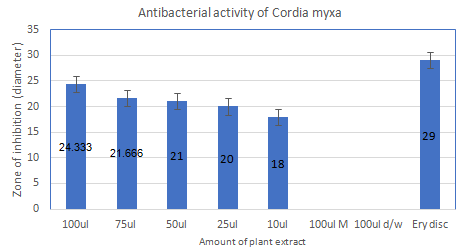
Figure 9: Comparative analysis of Cordia myxa plant extract and Standard
Erythromycin disc with respect to diameter of zone of inhibition.
In silico analysis
Ligand preparation: For all the selected ligands Structure data format (SDF) files were downloaded using the PubChem database and were analyzed using Marvin view which is an advanced chemical viewer. The energy minimization of all the ligands was done prior to the molecular docking analysis.
Phytochemical structures: 3-dimensional structures of all the ligands were retrieved using PubChem database and were analyzed using Marvin sketch.
Target selection and prediction: The target proteins were selected using Protein Data Bank. The criteria for the target structures of human protein receptors BRCA1 and BRCA2 were investigated using PDB analysis and BLAST. After the retrieval of 3D structure of the target proteins, Discovery Studio Visualizer tool was used for the removal of ions, ligands and water molecules from the proteins prior to the docking and addition of polar hydrogen atoms.
Homology modelling of BRCA1 and BRCA2 proteins: The target proteins modelling was done using SWISS-MODEL server and the structures obtained were visualized using PyMOL software (Figure 10 and 11).

Figure 10: 3D structure of BRCA1 protein.
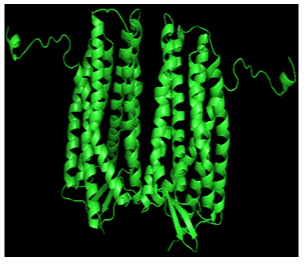
Figure 11: 3D structure of BRCA2 protein.
Drug likeness analysis
See Table 4.
Ligands
Molecular formula
Hydrogen Bond Acceptor
Hydrogen Bond Donor
cLogP
Molar Refractivity
Cordiagenol
C30H50O4
4
4
4.73
138.37
Cordiagenin
C30H50O4
6
6
3.17
140.69
Cordianol
C30H50O4
5
5
4
139.53
Catechol
C6H6O2
2
2
0.97
30.49
Tetradecanoic acid
C14H28O2
2
1
4.45
71.18
Squalene
C30H50
0
0
9.38
143.48
Nerolidol
C15H26O
1
1
4.19
74
Stigmasterol
C29H48O
1
1
6.96
132.75
Cedrene V6
C15H24
0
0
4.38
68.52
Lupeol
C30H50O
1
1
7.31
135.14
1-Docosene
C22H44
0
0
8.67
107.39
Beta amyrin
C30H50O
1
1
7.18
134.88
Isophytol
C20H40O
1
1
6.18
98.98
Cordiasaponin II
C42H70O14
14
10
0.93
203.13
Gymnemic acid II
C43H68O14
7
14
2.97
207.58
Gymnemic acid III
C41H66O13
8
13
2.64
197.84
Gymnemic acid IV
C41H64O13
8
13
2.55
197.37
Table 4: Lipinski filter analysis.
ADMET analysis: The analysis of the ADMET parameters was performed using the tool SwissADME and results were estimated for various parameters. The results for this analysis were shown in the Table 5 and 6.
Ligands
Molecular formula
Molecular weight
Heavy atom count
TPSA
Allointoin
C4H6N4O3
158.121g/mol
34
80.9 Å2
a-amyrin
C30H50O
426.7g/mol
36
121 Å2
Apigenin
C15H10O5
270g/mol
35
101 Å2
Β-sitosterol glycoside
C35H60O6
576.85g/mol
8
40.5 Å2
Hentricontanol
C31H64
436.85g/mol
16
37.3 Å2
Hesperidine
C28H34O15
610.1898g/mol
30
0 Å2
Octasanol
C28H58O
410g/mol
16
20.2 Å2
Lupeol
C30H50O
426.72g/mol
30
20.2 Å2
Robonine
C17H26O10
390.4g/mol
15
0 Å2
Rutin
C27H30O16
610.517g/mol
31
20.2 Å2
Betulin
C30H50O2
442.72g/mol
22
0 Å2
Caffeic acid
C9H8O4
180.16g/mol
31
20.2 Å2
Carotenoid
C40H56
536.9g/mol
21
20.2 Å2
Chlorogenic acid
C16H18O9
354.31g/mol
56
239 Å2
Datiscoside
C38H54O12
702.8g/mol
57
230 Å2
Dihydrorobenetin
C19H29NO3
319.4g/mol
54
224 Å2
Β-sitosterol
C29H50O
414.71g/mol
54
224 Å2
Table 5: Physico-chemical properties of the ligands.
Ligands
Blood brain barrier
GI absorption
Permeability glycoprotein Substrate
Log S (scale Insoluble < -10<Poorly<-6< Moderately
<- 4<Soluble<-2Very<0< Highly) [Water solubility]Allointoin
No
High
Yes
-5.20 (Moderately soluble)
a-amyrin
No
High
Yes
-3.55 (soluble)
Apigenin
No
High
Yes
-4.37 (Moderately soluble)
Β-sitosterol glycoside
Yes
High
No
-1.18 (soluble)
Hentricontanol
Yes
High
No
-4.51 (Moderately soluble)
Hesperidine
No
Low
No
-7.48 (poorly soluble)
Octasanol
Yes
High
No
-3.15 (soluble)
Lupeol
No
Low
No
-5.47 (Moderately soluble)
Robonine
No
Low
No
-4.09 (Moderately soluble)
Rutin
No
Low
No
-6.74 (poorly soluble)
Betulin
No
Low
Yes
-8.39 (poorly soluble)
Caffeic acid
No
Low
Yes
-7.16 (poorly soluble)
Carotenoid
No
Low
Yes
-5.5 (Moderately soluble)
Chlorogenic acid
No
Low
Yes
-1.54 (soluble)
Datiscoside
No
Low
Yes
-3.21 (soluble)
Dihydrorobenetin
No
Low
Yes
-2.62 (soluble)
Β-sitosterol
No
Low
Yes
-2.26 (soluble)
Table 6: Admesar analysis.
Molecular docking analysis
The energy minimization of all the selected ligands was done and was converted into pdbqt file format. The binding affinities of all the ligands were estimated using PyRx tool (Table 7). After the docking process, the docked structures were saved and visualized using the Biovia Discovery Studio tool. The 2D diagram of receptorligand interactions were analyzed of all the docked structures (Figure 12a-12c).
Phytochemicals
Binding affinity (Kcal/mol) for BRCA2
Binding affinity (Kcal/mol) for BRCA1
Allointoin
-8.4
-9.3
a-amyrin
-9.1
-8.2
Apigenin
-8.4
-8.9
Β-sitosterol glycoside
-5.2
-5.5
Hentricontanol
-5.2
-6.1
Hesperidine
-7.4
-8.5
Octasanol
-6.6
-6.3
Lupeol
-9.7
-9.8
Robonine
-7.7
-7.6
Rutin
-8.9
-10.3
Betulin
-6.2
-5.9
Caffeic acid
-8.9
-9.9
Carotenoid
-6.3
-7
Chlorogenic acid
-9.3
-10.6
Datiscoside
-9.2
-9.3
Dihydrorobenetin
-15.4
-15.7
Β-sitosterol
-15.2
-15.7
Table 7: Binding affinity of selected phytochemicals for BRCA1 and BRCA2 proteins.
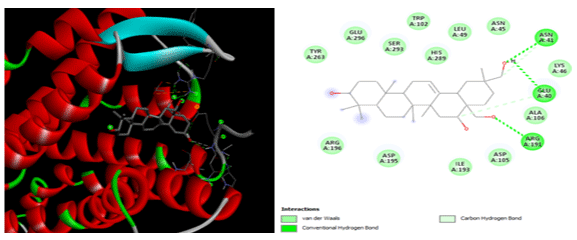
Figure 12a: Docked Phytochemicals with BRCA2 Protein. Docked and 2D diagram of receptor-ligand interactions
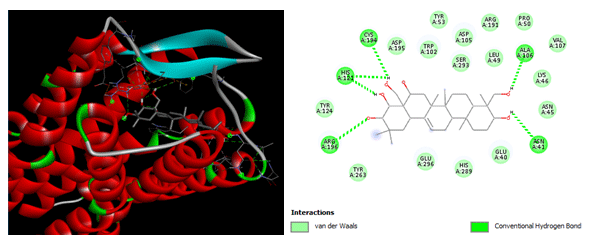
Figure 12b: Docked and 2D diagram of receptor-ligand interactions.

Figure 12c: Docked Cordianol and 2D diagram of receptor-ligand interactions.
Discussion
The aim of this study was to analyze the drug likeness of the phytochemicals from the plant Cordia myxa with respect to the receptors BRCA1 and BRCA2 as anti- targets. The significance of receptors as anti-cancer target depends on the fact that they are involved in the entry of the virus into the cell at the early stages. Cancer which can cause a critical health concern accountable for millions of deaths, and more people are being infected by this disease worldwide. Cancer infection is depicted by the eventual CD4+ T lymphocytes loss, leading to the development of cancer and also cancer in few cases [33].
BRCA1 and BRCA2 receptors are related structurally belonging to the GPCRs superfamily. The human BRCA1 and BRCA2 are the key receptors used by breast cancer for the entry into the host cell and hence they have a crucial part in the breast cancer life cycle [34]. The association of the breast cancer with the cellular receptor CD4 is an essential key step in the viral entry into the host cell.
Despite the identification of vast number of plants and its related compounds as anticancer agents yet there is need for the more research for their potential against viral infections. Globally, the discovery of anticancer is turning toward plant-derived drugs because they exhibit less toxicity and have a lower likelihood of developing resistance. Furthermore, anticancer medications have negative side effects that show impact on human health in many possible ways. This contributes to the advancement of minimal side effects of herbal treatments and plant-based drugs with. Phytochemicals have historically been used extensively to treat a variety of infections, and they have also been shown to suppress viral transcription or replication.
It is known through literature surveys that Cordia myxa is a crucial plant with several therapeutic properties and serves as one of the essential components in ayurvedic medicine formulations [35]. Cordia myxa has a long history of use in natural or herbal remedies all over the world, and its leaf extract is well known for its anticancer, antibiotic, anti-inflammatory, anti-oxidant, lipid-lowering activities, anticancer and gastro and hepatoprotective. This plant is also used to treat inflammations, eye problems, diabetes, snakebites, and family planning [36].
Using protein-ligand docking computational techniques, this research presents findings that identify updated molecular criteria and determinants for effectual binding of small-molecule ligands to human BRCA1 and BRCA2 chemokine receptors, the primary biological targets for cancer entry blockers [37]. These findings are compared to shape-based and property-based VS results for commercially existing CANCER entry blockers and these will be essential in novel entry blocking leads prediction.
This study has shown that among the selected phytochemicals lupeol, dihydrobenetin and Beta-sitosterol have exhibited a momentous binding affinity and stability towards the receptors through molecular docking and molecular dynamic simulation. This implies that the phytocompounds from the plant C. myxa can be used as novel leads for the breast cancer treatment and can be further investigated through in vivo studies for their potential.
This novel strategy has also the potential to save time and resources in comparison to other techniques. From the above observations, the phytochemicals of plant Cordia myxa especially lupeol, dihydrobenetin and Beta-sitosterol can be considered as potential agents in the novel anti-cancer drug development for breast cancer and other harmful diseases.
Conclusion
This research work was performed to identify and analyze the human chemokine receptors BRCA1 and BRCA2 in contrast to phytochemicals present in Cordia myxa through molecular docking mechanism. Various types of phytochemicals present in the Cordia myxa are beneficial in the numerous harmful diseases as well as blood related disorders. According to the results of the Molecular Docking and Pharmacological Analysis, we found that all the phytochemicals that were taken for this research work are highly beneficiary in the treatment and act as potential targets for the human breast cancer receptors BRCA1 and BRCA2.
Hence, it has been identified and predicted that all compounds (mainly lupeol, dihydrobenetin and Beta-sitosterol) may possibly serve as new leads for the cure of breast cancer infections and these results might be in future used in in vivo studies to test their effects on the cure of breast cancer infections.
Acknowledgement
I thank BioNome to guide in the research project guidance and publication process.
References
- Abdallah IZA, Khattab HAH, Heeba GH. Gastroprotective effect of Cordia myxa L. fruit extract against indomethacin-induced gastric ulceration in rats. Life Science Journal. 2011; 8: 433-445.
- Abdallah IZA, Khattab HAH, Heeba GH. Gastroprotective effect of Cordia myxa L. fruit extract against indomethacin-induced gastric ulceration in rats. Life Science Journal. 2011; 8: 433-445.
- Abdul Hamza NN, Al-Tahan FJ. Potentiation of the analgesic effect of mefenamic acid (Ponstan) by Cordia myxa Linn fruit. Proceeding of the Ninth Veterinary Scientific Conference-Baghdad. 2009; 2: 180-182.
- Aberoumand A. Preliminary evaluation of some phytochemical and nutrients constituents of Iranian Cordia myxa fruits. International Journal of Agricultural and Food Science. 2011; 1: 30-33.
- Aberoumand A. Preliminary evaluation of some phytochemical and nutrients constituents of Iranian Cordia myxa fruits. International Journal of Agricultural and Food Science. 2011; 1: 30-33.
- Afzal M, Obuekwe C, Khan AR, Barakat H. Antioxidant activity of Cordia myxa L. and its hepatoprotective potential. EJEAF Che. 2007; 8: 2236-2242.
- Afzal M, Obuekwe C, Khan AR, Barakat H. Influence of Cordia myxa on chemically induced oxidative stress. Nutrition & Food Science. 2009; 39: 6-15.
- Afzal M, Obuekwe C, Khan AR, Barakat H. Influence of Cordia myxa on chemically induced oxidative stress. Nutrition & Food Science. 2009; 39: 6-15.
- Afzal M, Obuekwe C, Shuaib N, Barakat H. Photosynthetic pigment profile of Cordia myxa L. and its potential in folklore medicinal application. Food, Agriculture & Environment. 2004; 2: 114-120.
- Alami R, Macksad A (eds). Medicinal plants in Kuwait, Al-Assriya Press, Kuwait. 1974: 6.
- Ali A, Deokule SS. Proximate and mineral composition of the Sepestan (Cordia myxa R.) as a plant food. Journal of Medicinal Food Plants. 2009; 1: 92-96.
- Ali KA. Study of effect of alcoholic extract of fruit of Cordia myxa in total count and differential count of white blood cells in rats. AL-Qadisyia Journal of Vet Med Sci. 2008; 7: 21-24.
- Ali WR, Al-Asady ZT, Ibrahim AA. Immunomodulatory of Cordia myxa (L.) aqueous extract fruit in immunized mice with hydatid cyst fluid. Journal of Natural Science Research. 2015; 5: 75-83.
- Al-Snafi AE. Therapeutic properties of medicinal plants: a review of plants affected smooth muscles functions (part 1). Int J of Pharmacy. 2015; 5: 90-97.
- Al-Snafi AE. Therapeutic properties of medicinal plants: a review of their gastro-intestinal effects (part 1). Ind J of Pharm Sci & Res. 2015; 5: 220-232.
- Al-Snafi AE. Therapeutic properties of medicinal plants: a review of plants with hypolipidemic, hemostatic, fibrinolytic and anticoagulant effects (part 1). Asian Journal of Pharmaceutical Science & Technology. 2015; 5: 271-284.
- Ashour OM, Abdel-Naim AB, Abdallah HM, Nagy AA, Abdel-Naim AB, Abdallah HM. Evaluation of the potential cardioprotective activity of some Saudi plants against doxorubicin toxicity. Z. Naturforsch. 2011; 67c: 297-307.
- Chopra RN, Nayar SL, Chopra IC. 1st edn. New Delhi: CSIR. Glossary of Indian medicinal plants, National institute of Science communication and information resources. 1956: 77.
- Dutta S, Das S. A study of the anti-inflammatory effect of the leaves of Psidium guajava Linn. on experimental animal models. Pharmacognosy Res. 2010; 2: 313-317.
- Evans WC. 16th ed. Saunders Elsevier. Trease and Evans Pharmacognosy. 2009: 135-148.
- Handunnetti SM, Kumara RR, Deraniyagala SA, Ratnasooriya WD. Anti-inflammatory activity of Ixora coccinea methanolic leaf extract. Pharmacognosy Res. 2009; 1: 80-90.
- Haq MA, Azam M, Hasnain A. Gum Cordia as carrier of antioxidants: effects on lipid oxidation of peanuts. J Food Sci Technol. 2015; 52: 2366-2372.
- Harborne JB. A guide to modern techniques of plant analysis. 3rd ed. UK: Chapman and Hall, ICMR. Phytochemical methods. 1998: 89-131.
- Karami MA, Moghimipour E, Saafi SF. Preparation and evaluation of Cordia myxa fruit topical cream. World Journal of Pharmaceutical Research. 2015; 4: 244-253.
- Kim Sunghwan, et al. “PubChem substance and compound databases”. Nucleic acids research. 2016; 44: D1202-D1213.
- Kirtikar KR, Basu BD. Indian Medicinal Plants. In: Basu LM, editor. 2nd ed. Allahabad: Central Council for Research in Ayurveda and Siddha (Dept of AYUSH, Min of Health and Family Welfare), Govt of India. 1933: 2131-2133.
- Kondapuram, Sree Karani, Sailu Sarvagalla, Mohane Selvaraj Coumar. “Docking-Based Virtual Screening Using PyRx Tool: Autophagy Target Vps34 as a Case Study”. Molecular Docking for Computer-Aided Drug Design. Academic Press. 2021: 463-477.
- Kovacs Julio A, Pablo Chacón, Ruben Abagyan. “Predictions of protein flexibility: first-order measures”. Proteins: Structure, Function, and Bioinformatics. 2004; 56: 661-668.
- Kumar, R Barani, M Xavier Suresh. “A computational perspective of molecular interactions through virtual screening, pharmacokinetic and dynamic prediction on ribosome toxin A chain and inhibitors of Ricinus communis”. Pharmacognosy research. 2012; 4: 2.
- Lipinski CA, Lombardo F, Dominy BW, Feeney PJ. Experimental and computational approaches to estimate solubility and permeability in drug discovery and development settings. Adv. Drug Deliv. Rev. 2001; 46: 3-26.
- Manni Peter E, Joseph E Sinsheimer. “Constituents from Gymnema sylvestre leaves”. Journal of pharmaceutical sciences. 1965; 54: 1541-1544.
- Meng Xuan-Yu, et al. “Molecular docking: a powerful approach for structurebased drug discovery”. Current computer-aided drug design. 2011; 7: 146- 157.
- Morris Garrett M, Marguerita Lim-Wilby. “Molecular docking”. Molecular modeling of proteins. Humana Press. 2008: 365-382.
- Murgueitio Manuela S, et al. “In silico virtual screening approaches for anti-viral drug discovery”. Drug Discovery Today: Technologies. 2012; 9: e219-e225.
- Mustaffa F, Indurkar J, Ismail S, Mordi MN, Ramanathan S, Mansor SM. Analgesic activity, toxicity study and phytochemical screening of standardized Cinnomomum iners leaves methanolic extract. Pharmacognosy Res. 2010; 2: 76-81.
- Nisar M, Khan I, Simjee SU, Gilani AH, Obaidullah, Perveen OH. Anticonvulsant, analgesic and antipyretic activities of Taxus wallichiana Zucc. J Ethnopharmacol. 2008; 116: 490-494.
- Okpo SO, Fatokun F, Adeyemi OO. Analgesic and anti-inflammatory activity of Crinum glaucum aqueous extract. J Ethnopharmacol. 2001; 78: 207-211.